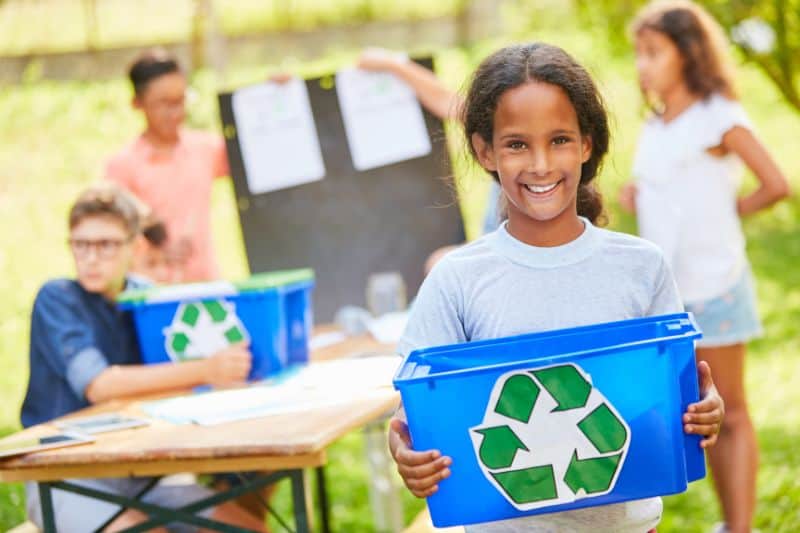Forests are rapidly disappearing all over the world, alarming many people. The loss of this natural resource could spell disaster for our planet, and, unfortunately, most of us are unsure of what we can do to stop the damage.
So, how exactly can we prevent this global crisis? Well, chaining yourself to a tree might make a statement, but there are many more ways to prevent deforestation.
Protecting the world’s forests should be our first priority in fighting global warming and climate change. Forests are critical to life on Earth. 1.6 billion people rely on them for food, shelter, fuel and income.
A nation that destroys its soils destroys itself. Forests are the lungs of our land, purifying the air and giving fresh strength to our people.
~ Franklin D. Roosevelt
Forests provide various environmental, social and economic benefits that improve our quality of life. They maintain and support the environment by regulating the climate, improving air quality, conserving and cleaning water, and supporting wildlife.
Some environmental benefits include cleaning the air by absorbing noxious gases and pollutants, improving air quality, preventing soil erosion, serving as home for wildlife, improving the groundwater level, providing shade to homes, which results in reduced energy costs and controlling floods.
Forests also provide protection against Natural disasters like floods and landslides, provide a great place for survival for various ecosystems and beautify our communities. They are also a great place for adventure and sports. In short, we need our forests, and our forests need us!
What Can the Average Person Do to Help Prevent Deforestation?
As an average person, there are several measures you can embrace to help curb deforestation. Some of these measures are the little everyday things often overlooked, but they can go a long way to improving our planet in the long run!
1. Ditch the Printer

The less you print, the less paper is used. Trees are cut down for paper. Therefore, the less you print, the fewer trees will have to be brought down. In the long run, this could add up to many saved trees.
2. Use Double-sided Paper
If you can’t totally avoid the printer, how about introducing efficiency in the number of papers you need to use? It’s simple: print on both sides of the page. This will reduce paper consumption by half, saving half the number of trees in a forest that has to be cut for paper processing.
3. Go Digital With Your Bills
In the same way, printing less causes less demand for paper; getting your bills through e-mail instead of a printed copy in the mail will decrease the demand for paper.
4. Buy Only FSC Certified Wood Products
The FSC (Forest Stewardship Council) monitors that these products are sourced in an environmentally responsible way. If a product is not FSC Certified, boycott it. By so doing, you will discourage unsustainable deforestation.
5. Switch to Bamboo Paper
Bamboo is easily sustainable and matures within five years, much faster than trees. In fact, Bamboo remains the fastest-growing plant on the planet. And thankfully, this plant has exactly the same function as trees. Hence, try to use bamboo paper as much as possible to lower the demand for paper produced by trees.
6. Switch to Digital Books
If you’re an avid reader, one way to help save our planet from deforestation is by embracing e-books. E-books, like ditching the printer, create less demand for paper.
Plus, digital books are more convenient as you have an endless supply of books on a single device. You can even read from a digital device in the dark, unlike with a book printed on paper, again helping you save on energy!
7. Use the Library

If you still prefer to read the real thing, borrow books from your local library. It’s cost-efficient and environmentally conscious. Books are what you can always borrow, share and donate.
8. Read Your Magazines Online
Most magazines offer the exact same content online if you sign up for a subscription with them. Plus, you will even receive the content immediately after it is released instead of waiting for your copy to be delivered.
9. Switch Cards to E-cards
This will let your friends know you care about them and the environment.
10. Reuse Gift Bags and Others
If this seems unappealing, opt for recyclable gift bags. Even explorers enjoy playing with cardboard boxes, empty toilet paper rolls, and shoeboxes. These boxes can become palaces, forts, and superhero headquarters; toilet paper rolls can turn into binoculars and bird feeders; and paper towel rolls can transform into spotting scopes and periscopes.
11. Plant Trees
Planting trees is a vital step in forest conservation. It enhances biodiversity, combats climate change, and prevents soil erosion, ensuring the long-term health and sustainability of our ecosystems.
12. Use Reusable Containers
Use containers that can be used again and again for your food, trinkets, and just anything. This practice aids forest conservation by reducing the demand for disposable packaging, minimizing waste, and lessening the environmental impact associated with their production.
13. Use Cutlery
While paper plates and cups are convenient, they are not an environmentally-aware choice.
14. Avoid the Paper Towels
Avoiding paper towels contributes to forest conservation. By reducing paper consumption, especially from single-use items like paper towels, we help protect forests from unnecessary deforestation and promote a more sustainable future.
15. Paper Towel Alternatives
If you need paper towels, buy tree-free or recycled paper towels instead of those made from tree pulp.
16. Switch From Paper Napkins to Cloth Napkins
Switching from paper napkins to cloth napkins decreases the demand for paper production, reducing deforestation and environmental strain on forests.
17. Use Cloth Diapers
Paper diapers are a strain on the environment. Many communities have diaper services that will pick up dirty diapers and leave clean ones.
18. Buy Used Wooden Furniture
Purchasing used wooden furniture supports forest conservation. By opting for secondhand items, we reduce the demand for new wood production, which helps preserve forests and lessen the ecological impact of logging and deforestation.
19. Educate Others

Whether it is your children, friends, or colleagues, the more aware the people are of what they can do to help prevent deforestation, the better.
Effective Ways to Conserve Forest
Some of the most effective ways we can combat forest damage and encourage conservation include:
20. Laws and Rules Help Prevent Deforestation
Regulations help prevent deforestation because they allow for a time of re-growth due to the rotational approach most of these regulations have. This can also be referred to as sustained yield.
21. Planned and Regulated Tree-cutting
The commercial felling of trees is one of the main reasons for deforestation. Although trees are considered perennial resources, they are exploited on a large scale.
According to an estimate, about 1,600 million cubic meters of wood have been used for various purposes in the world. Assuming we carry on cutting at the same rate, then forest conservation becomes almost impossible. As such, cutting should be regulated by adopting methods like:
- Clear cutting: Implementing a strategy for sustainable management, areas with uniform tree species and age can be selectively harvested. Subsequently, these sections are designated for replanting, ensuring the continuity and health of the forest ecosystem.
- Selective cutting: When selective cutting is implemented, only fully mature trees can be cut down. This process is to be followed in rotation.
- Shelterwood cutting: This method entails that the least useful trees are cut down first, while the highest quality trees are cut down last.
22. ‘Sustained Yield’ Method
This approach is embraced by numerous countries. Under regulated cutting, merely a fraction of the forest area, typically one-tenth, is designated for utilization. This practice adheres to a rotational system, ensuring ongoing protection.
The intervals between these harvests allow trees to regenerate. This meticulous forest management enables sustainable timber harvesting year after year, ensuring perpetual resource availability.

23. Reforestation
The sustainable yield method also requires replanting every tree that gets cut down. Similarly, any tree that gets burned down due to forest fires or mining activities must also get replanted.
That can be done by either natural or artificial methods depending on what’s more appropriate. For instance, in rugged terrain, aerial seeding would be the most appropriate method.
24. Afforestation
Fresh afforestation programs should also be started. New plantations will increase the forest cover and help make up the eco-balance. For afforestation, the selection of trees should be made according to local geographical conditions, and care must be taken during the initial growth of the trees.
25. Monitor Agriculture
Many forested areas are cleared to make room for agricultural lands. In fact, most of the present-day agricultural land was once forested and then cleared for agricultural use. But currently, any further clearance can prove dangerous for the entire ecosystem and should be limited.
There are tribes in some parts of Asia, Africa, and South America where shifting cultivation is still a part of their system of land procurement.
26. Protect Existing Forests
In addition to the threat of humans, forests are endangered by parasitic fungi, rusts, mistletoe, viruses and nematodes. All these can destroy the trees, so an effort should be made to administer a chemical spray or other treatment to destroy the parasites.
27. Produce Less Waste

A shocking amount of wood gets wasted when trees are cut down for logs. The rest is simply thrown away when it could be used for other purposes.
28. Full Utilization of Forest and Forests Products
Trees are often felled for their logs, leaving behind discarded remnants such as stumps, limbs, branches, and foliage. This wasteful practice continues at sawmills. However, innovative solutions have emerged to repurpose this waste.
By harnessing these materials, valuable products like waterproof glues and boards can be produced, significantly minimizing waste and maximizing resource utilization.
29. Raise Awareness Through Tourism
Forests could become popular tourist destinations. This will give the forest more value and protect it. It will also improve the local economy, thanks to the tourists spending their money there. Poorer communities will no longer have to cut down trees for a living.
30. The Government Role
There are many proposed things that the government can do, such as:
- Passing acts that require the conservation of forests
- Surveying the forest resources to prevent overusing the resources
- Categorizing forest areas and proper delimitation of reserved forest areas to prevent anyone from damaging the reserved area
- Find out which areas require reforestation
- Regulating and improving upon the commercial use of forest products
- Protecting forests from fire, mining and other threats
- Developing national parks.
31. Forest Department Role
The Forest Department can also play a huge role in preventing deforestation. Managing the forest would include the following steps:
- Survey of forests,
- Categorization of forests
- Economical use of forests
- The administrative setting for forest management
- Training programs for persons engaged in forest conservation activities,
- Use of forest land as tourist centers
- Social and agro-forestry
- Development of new techniques for the conservation of forests
- Research for efficient use and conservation of forests
- Policy decisions and their proper implementation.
32. Control of Forest Fires
Forest fires also contribute to Deforestation. The fires occur in the following ways:
Natural disasters: Some forest fires are caused by nature. It can be through lightning or trees rubbing against each other during a strong wind, thus, creating friction. Unfortunately, there’s nothing much we can do to prevent these acts of nature.
Manmade: Most forest fires are due to human negligence. And unlike the natural cause, there are ways to prevent this from happening, such as:
- Do not make open fires
- Do not throw your cigarette on the ground
- Maintain electricity wires properly
- Take the help of proper equipment and trained staff to put out forest fires.
Following these steps can save up to 21.5 million acres of timber annually. Forest fires are currently the main cause of deforestation in the USA.
Forest fires are common worldwide, and in most cases, they are begun by man.
“To stage a forest fire you need only few things a forest, the right atmospheric conditions, and a spark either from a lightning bolt or a match in the hands of a fool or a knave. The formula is simple the larger the forest, the drier the air, the bigger the fool, the bigger the fire you will have.”
John D. Guthrie, former fire inspector of US Forest Service
33. Prevent Forest Fires
You can help prevent forest fires by educating others about the causes of forest fires and ways to prevent them. Join an organization that works to protect our forests.
At the end of the day, the only way that we can combat deforestation is by joining together and raising awareness. If every person on earth started caring about our forests today, the problem would be solved.
Unfortunately, many people are ignorant of what is happening, while many others simply do not care. Do not be one of these people. Rather, fight to save our planet!






